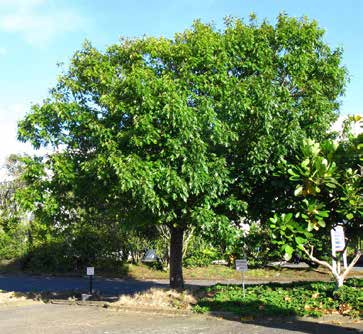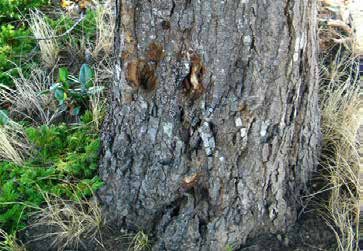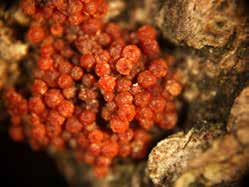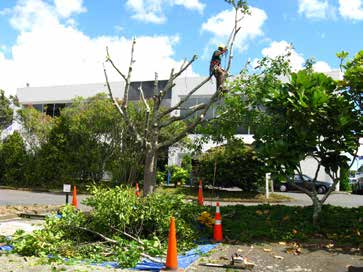PESTS AND DISEASES OF FORESTRY IN NEW ZEALAND
A biosecurity post-border success story: Early detection and removal of Rugonectria canker fungus in an oak tree
Scion is the leading provider of forest-related knowledge in New Zealand
Formerly known as the Forest Research Institute, Scion has been a leader in research relating to forest health for over 50 years. The Rotorua-based Crown Research Institute continues to provide science that will protect all forests from damage caused by insect pests, pathogens and weeds. The information presented below arises from these research activities.
From Forest Health News 247, April 2014.
The following is based on an article by Ho et al. (2014) that appeared in Surveillance 41(1): 45-47. Thanks to the Ministry for Primary Industries for permission to do this. The original article can be found at: http://www.sciquest. org.nz/node/94085.
Introduction

In 2011, an oak tree (Quercus robur x canariensis) with elongate, sunken cankers on the trunk was discovered in urban Auckland through the High Risk Site Surveillance Programme conducted by the MPI. The affected tree was located near a hub of registered Transitional Facilities for overseas shipping containers. This article describes how the fungus was identified, contained and treated. It appears likely that the result is a successful eradication of this new to New Zealand organism before it had an opportunity to become established.
Identification of the fungus
The trunk cankers bore orange-red fruit bodies of a nectriaceous fungus that did not match the description of species known to be associated with oak cankers in New Zealand. Morphological characteristics of the specimen fitted the broad description of a fungus, Rugonectria castaneicola, which is associated with stem cankers or cracked bark of a range of tree hosts in Japan. When the DNA sequences on this fungus from the oak tree were examined and compared with sequences retrieved from international databases, it was revealed to be a species new to science and present in China, subsequently named R. sinica. This is the first record of a species of Rugonectria associated with a stem canker of Q. robur x canariensis in New Zealand.
Pathogenicity of Rugonectria sinica

Species of Rugonectria are putative tree pathogens as they are associated with stem and trunk cankers, or found growing on recently killed trees. Rugonectria castaneicola is associated with stem cankers or cracked bark on a range of tree hosts in Japan. Its pathogenicity has been demonstrated in Abies veitchii and Acer crataegifolium. Rugonectria rugulosa causes bark death and is associated with trunk cankers of Macadamia integrifolia in Hawaii. The third previously recorded species, R. neobalansae, occurs on the bark of living and recently killed trees and is known only in Indonesia.
The crown of the infected tree was healthy but a cross- section of the sapwood beneath the cankers was stained brown. In China, R. sinica has been found on dead twigs of plants, including Quercus species. The potential for R. sinica to be a serious pathogen of Quercus spp. is unknown.

Removal of infected tree and treatment of material
Permission was obtained from the lessees of the Auckland site to fell and dispose of the infected tree. Branches were removed and the tree felled in December 2011. All plant material including stump, branches and leaves was wrapped in tarpaulins and transported in a covered truck for deep burial at an approved site. Sawdust and wood chips were removed from chainsaws and added to the material sent to the landfill. Chainsaws were stripped and, along with other equipment used at the site, were sprayed with a quaternary ammonium compound solution. The parts were left for 30 minutes, rinsed with water and left to dry. The stump was cut below ground level and a heavy coating of picloram herbicide applied to the surface. In regular follow-up surveys the fungus has not been found on surrounding trees. MPI will declare that the fungus has been eradicated if no further finds are detected during follow-up surveys.

staining of sapwood.

staining of sapwood.
This information is intended for general interest only. It is not intended to be a substitute for specific specialist advice on any matter and should not be relied on for that purpose. Scion will not be liable for any direct, indirect, incidental, special, consequential or exemplary damages, loss of profits, or any other intangible losses that result from using the information provided on this site.
(Scion is the trading name of the New Zealand Forest Research Institute Limited.)

 Farm Forestry New Zealand
Farm Forestry New Zealand

